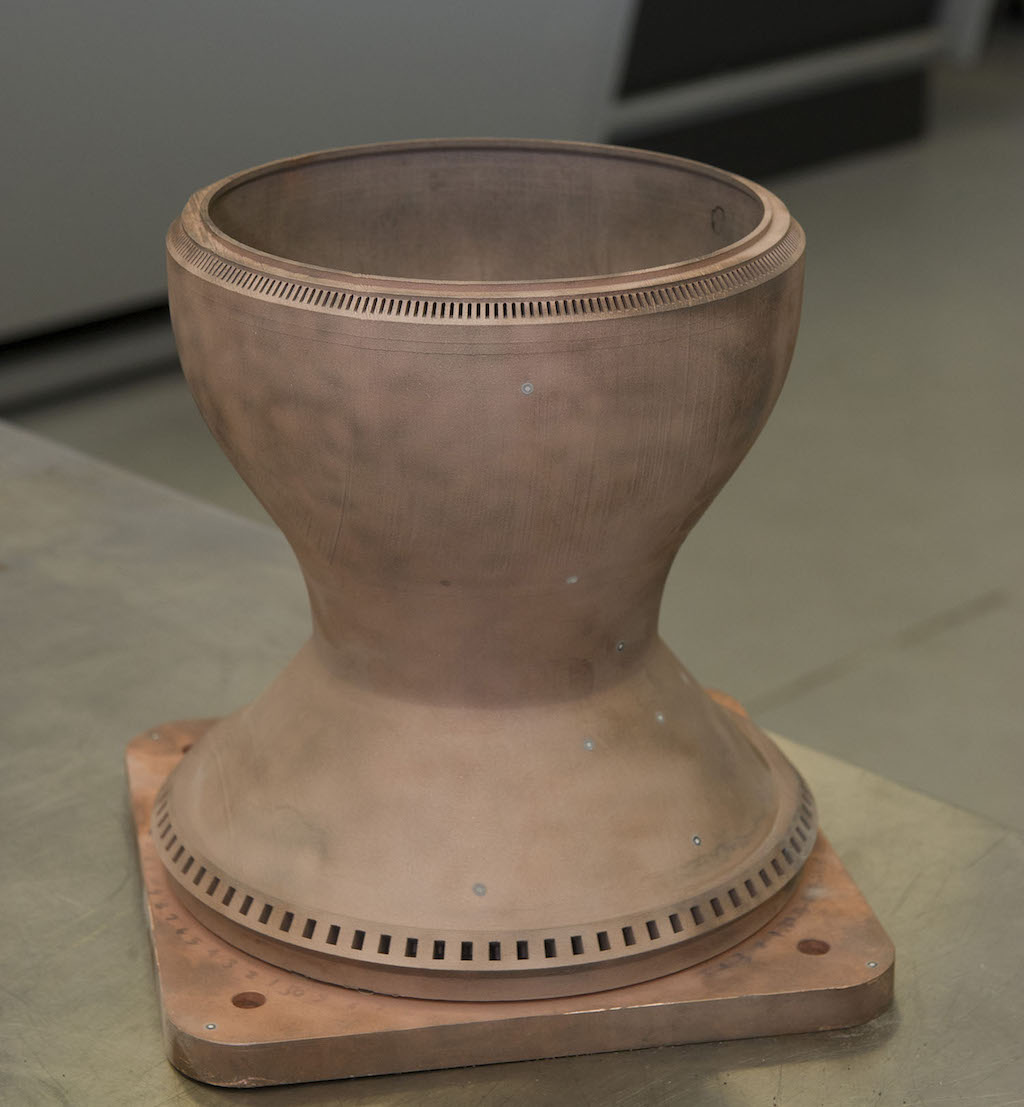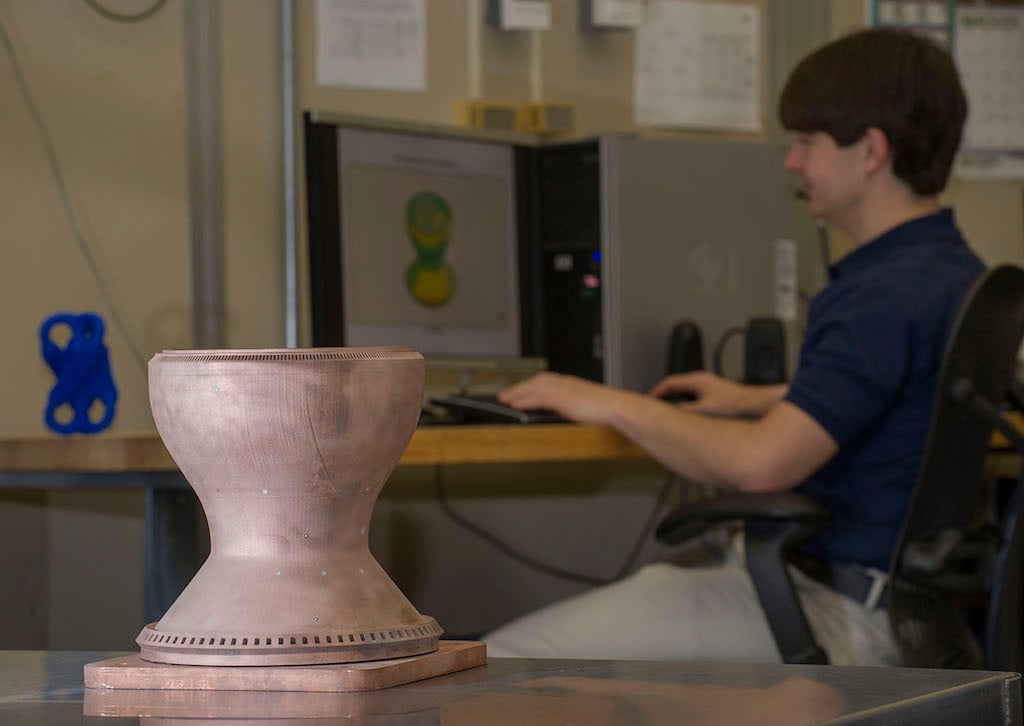US space agency NASA has 3D printed a full-scale rocket engine part in copper.
NASA has been experimenting with 3D printed rocket parts previously, but this particular design takes full advantage of 3D printing technology.
The problem with rocket engines is that they’re faced with a rather extreme heat scenario: rocket fuels are typically extremely cold, while the firing engine produces extremely high heat.
The heat is sometimes so hot it can actually melt the engine “bell” or combustion chamber, where the hot exhaust leaves the engine. The bell must literally be at 5,000F on the inside and far below freezing on the outside. To counteract this, rocket makers often flow the supercold liquid fuels through the engine bell to keep it cool during firing.
Making a combustion chamber with numerous fine channels for fuel coolant is a tricky business, but with 3D printing it becomes far simpler. The design is simply created in a 3D model and then printed in solid metal.
NASA’s design here involved more than 200 tiny fuel channels embedded within the bell’s structure, something impossible to make in one piece using conventional approaches. Once printed in copper, it will be plated in a nickel super-alloy jacket and then be ready for live-fire testing.
According to NASA, the print took 10 days and 18 hours to print 8,255 fine layers in GRCo-84 copper alloy. They say their goal is to produce rocket parts 10x faster and 50% less expensive using these techniques.
This is the correct way to use 3D printing technology: make things not possible otherwise.
Via NASA



